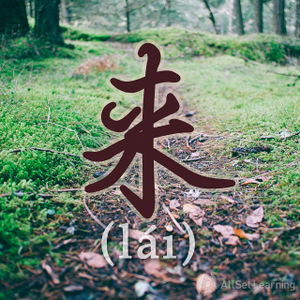Advanced uses of direction complement "-qilai"
-
Level
-
Similar to
-
Used for
-
Keywords
We saw in B1 that 起来 (qǐlái), among other things, can be used to express a literal upward movement. 起来 also has some more slightly less intuitive usages, listed below.\r\n==Expressing bringing things together==\r\n===Structure===\r\n起来 can be used to express collecting things together, where in English we might say "tidy up", or "add up".\r\n
Verb + 起来
\r\n===Examples===\r\n
- 宝宝,你 应该 把 你 的 玩具 收 起来 。Darling, you should put your toys away.
- 怎么 才 能 让 她 高兴 起来。Anything to make her be happy.\r\n
\r\n==Expressing initiation of an action==\r\n===Structure===\r\n起来 can also be used to show that an action or state has started and is ongoing:\r\n
Verb + 起来 + 了
\r\n===Examples===\r\n
- 大家 笑 起来 了。Everyone started laughing.
- 两 个 大妈 吵 起来 了。Two aunts started arguing.
- 今天 天气 热 起来 了。It's starting to get hot today.
- 他 的 病 好起来了。His illness is starting to get better.
\r\nWhen used like this, 起来 is only used with spontaneous actions, like 唱, 跳, 讨论, or with states like 热,冷,or 好 etc. It cannot be used with planned actions. \r\n
- 我们 做饭 起来 吧。
- 我们 开始 做饭 吧。
\r\n==See also==
- Result complement "-qilai"
- Figurative directional complements 下去 and 出来
- Direction complement
- Result complements "dao" and "jian"
- Appearance with "kanqilai"\r\n== Sources and further reading ==\r\n
===Books===\r\n* Boya Chinese Elementary Starter 2 (博雅汉语初经起步篇) (pp. 80) →buy
- Chinese Grammar - Broken down into 100 items - Basic and Intermediate Levels (汉语语法百项讲练 - 初中级) (pp. 25-31) →buy
- Integrated Chinese: Level 1, Part 2 (3rd ed) (pp. 141-2) →buy
- Integrated Chinese: Level 2, Part 1 (pp. 342-3) →buy
- Integrated Chinese: Level 2, Part 2 (pp. 20) →buy
- New Practical Chinese Reader 3 (新实用汉语课本3) (pp. 169) →buy
- New Practical Chinese Reader 5 (新实用汉语课本5) (pp. 134-5) →buy\r\n=== Websites ===\r\n* Yale: Extended meaning of some directional complements



